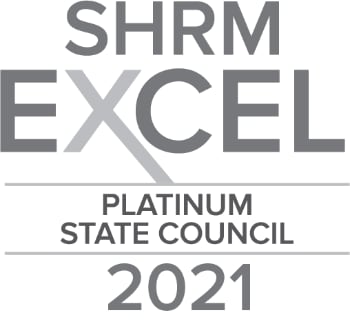Inclusivity is more than a buzzword or a box to check. We all have a moral obligation to create workplaces that are fair and open to all, and that’s why inclusivity is an integral part of building a successful business. In fact, diverse organizations are 45% more likely to improve their market share.
It’s easy to talk about the importance of inclusivity. But how can businesses walk the talk and start actually building an inclusive hiring process? True inclusivity is about long-term change. There are small steps any business can take to start working toward more inclusive hiring. Read on for four steps for building an inclusive hiring process.
- Set objectives.
Take a hard look at your own organization and see what’s working and what’s not. It’s important to consult your employees for a true business culture gut check. Business leaders are often unaware that their workplaces lack inclusivity. It goes far beyond hiring quotas — daily interactions between coworkers make up a workplace’s culture and environment.
After level-setting, it’s time to set goals. Think about where your business is now, and where you would like to be in the future. Maybe your goals include hiring more diverse talent, or a large-scale shift in priorities across the company. Whatever your goals, they should be both measurable and attainable.
- Start with recruitment.
If your business is only actively recruiting a small segment of potential candidates, you’re missing out on some potentially great employees, even if you’re not knowingly excluding any particular groups. That can mean a lot of things — maybe you’re only recruiting high-income students, overlooking those with a criminal record, or giving in to unconscious biases and passing over candidates based on ethnicity, gender or disability.
To develop more inclusive recruitment practices, make sure you’re encouraging all types of people to apply for your job openings. If you notice that your applicants are 75% male, consider actively recruiting more women to achieve greater gender balance. It’s all about being intentional and making a strong effort to recruit fairly.
- Seek out useful resources.
Inclusivity is a major priority for businesses nationwide, but we all still have room to improve. Because equality in the hiring process is so important, there are a wealth of resources you can engage to help you improve your hiring practices.
Below is a short list of helpful resources on equal employment practices. You can read up, attend conferences, or even invite speakers in to your own business to educate employees.
- U.S. Equal Employment Opportunity Commission – Small Business Resource Center
- SHRM Diversity & Inclusion
- National Employment Law Project Publications
- Centre for Global Inclusion
- Evaluate and improve.
Fostering an inclusive hiring practice is an iterative process. It won’t happen in one interview, one pool of applicants, or even one year. But small changes can make a big difference over time. While you’re trying out different strategies and tactics for inclusive hiring, be sure to constantly evaluate what’s working and what’s not.
Keep tabs on how employees feel at work, and watch how your applicant pool and workforce changes across demographic and socioeconomic measures. When you find something that works, whether it’s a recruitment tactic or interview method, do more of it. Be ready for change and leave the door open for employee contributions. The more people are involved with promoting inclusion at your company, the more successful you’ll be in building a truly inclusive workplace.






